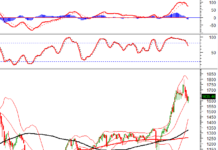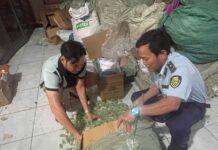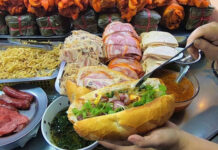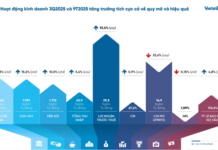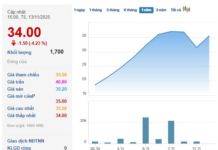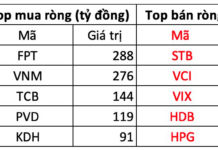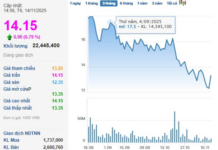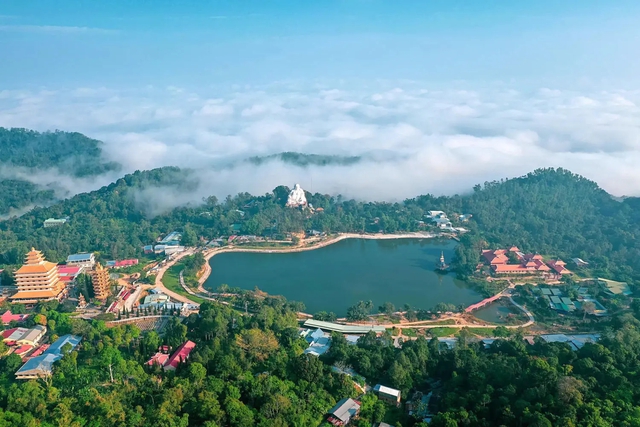
According to the An Giang provincial plan for the period of 2021-2030, with a vision to 2050 that has just been approved by the Government, by 2030, Tan Chau town will be transformed into a type III urban area and become a city directly under the province. After 2030, it will meet the criteria and standards of a type II urban area.
At the same time, Tan Chau town is the dynamic urban area in the north of the province, focusing on the development of border economy: trade, services, processing industry, manufacturing, and international trading hub at Vinh Xuong International Border Gate.
According to this plan, Tan Chau town, which belongs to the East economic-social region, will concentrate on large-scale agricultural production and aquaculture of the province; commercial activities, services, tourism, logistics, processing industry, manufacturing, and goods transshipment with the Cambodian market (via Vinh Xuong and Khanh Binh border gates).
In terms of location, Tan Chau town is a border town located in the northeast of An Giang province. This is the headwater of the Tien River, with a 6.33km of border line adjacent to Kandal province, Cambodia, with Vinh Xuong International Border Gate – the only river road border gate between Vietnam and Cambodia. This area is the important economic trading gateway of the provinces in the Mekong Delta to the upstream countries of the Mekong River such as Cambodia, Laos, China.
In terms of economy, in recent years, the economy of this town has experienced a strong growth, especially in import and export. In 2023 alone, the total import and export turnover of all types of goods through Vinh Xuong International Border Gate reached over $884.5 million (an increase of 43.95% compared to 2022). Disbursements of public investment capital reached 80.02% of the plan.
By the end of 2023, the average income per capita of the town reached 68.3 million VND, an increase of 3.2 million VND compared to 2022; the poverty rate decreased by 0.48% (202 households), surpassing the set target, and the near-poor households decreased by 4.45% (969 households).
In terms of transportation, there are a series of connecting roads, typically including: Thanh Nong Canal Road to Phu Tan District and National Highway 91 in the North – South transportation axis of the town. Meanwhile, the road connecting Long Thanh and Long Son wards to Provincial Road 954 is under construction with great expectations for the future. This bypass road will connect to Provincial Road 953 to Chau Doc City and Provincial Road 954 to Phu Tan District in the East – West transportation axis.
An Giang will have 3 cities
According to the An Giang provincial plan for the period of 2021-2030, with a vision to 2050, by 2030, An Giang will be a relatively developed province in the Mekong Delta region; having a dynamic, harmonious, and sustainable economy; being a center for researching, developing breeds, and applying advanced technology in agriculture, aquaculture, and pharmaceuticals; being an ecotourism center of the region; being a commercial and service hub, cooperating with the Kingdom of Cambodia; having a comprehensive and synchronized infrastructure system adapting to climate change; conserving and promoting traditional cultural values; maintaining strong defense and security; maintaining stable social order; ensuring social security, and ensuring the people’s prosperous and happy lives.
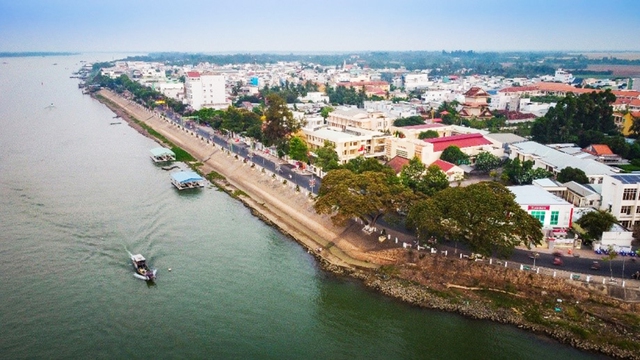
In terms of the economy, An Giang strives to achieve an average annual Gross Regional Domestic Product (GRDP) growth rate of 7% by 2030. The proportion of the agricultural, forestry, and fisheries sectors in the GRDP is about 20%; the industrial and construction sectors account for about 25%; the service sector accounts for about 50%; and the product tax excluding subsidy accounts for about 5%. The average per capita GRDP (current prices) is over 157 million VND.
In terms of society, the average population growth rate is 0.9% per year. The proportion of trained labor is over 80%, of which the proportion of labor with degrees and certificates is 39%. The urbanization rate is over 50%.
In the vision to 2050, An Giang will be a comprehensive, modern, civilized, ecological, and sustainable province; being a trading hub of goods and services for the region with the Cambodian market and ASEAN countries; having a unified cultural identity in the diversity of ethnic groups in the province and the rich water culture of the upstream Mekong Delta. The defense and security are strong, social order and safety are stable, and the people have prosperous and happy lives.
By 2030, when meeting the conditions and criteria according to regulations, the entire province will have 27 urban areas, including: 01 type I urban area, 01 type II urban area, 02 type III urban areas, 12 type IV urban areas, and 11 type V urban areas.
In addition to Tan Chau town becoming a city, Long Xuyen city will be the political, economic, cultural, educational, training, application, and technology transfer center. Chau Doc City will be a green, modern urban area; a national-level commercial, service, and tourism center associated with national defense and security, serving as a driving force to support the development of the Seven Mountains region.
Tinh Bien town is the border urban area of the province, the international trading gateway through Tinh Bien border gate, closely linked to the Chau Doc – Long Xuyen economic corridor and the Tinh Bien – Chau Doc – An Phu – Tan Chau border corridor; a tourism, commercial, service, processing industry, and manufacturing center.
Other urban areas will play the role of administrative, economic, cultural, and social centers of district-level administrative units.

